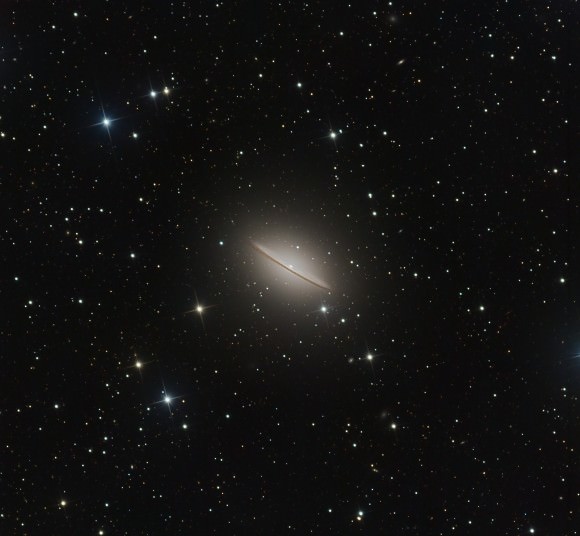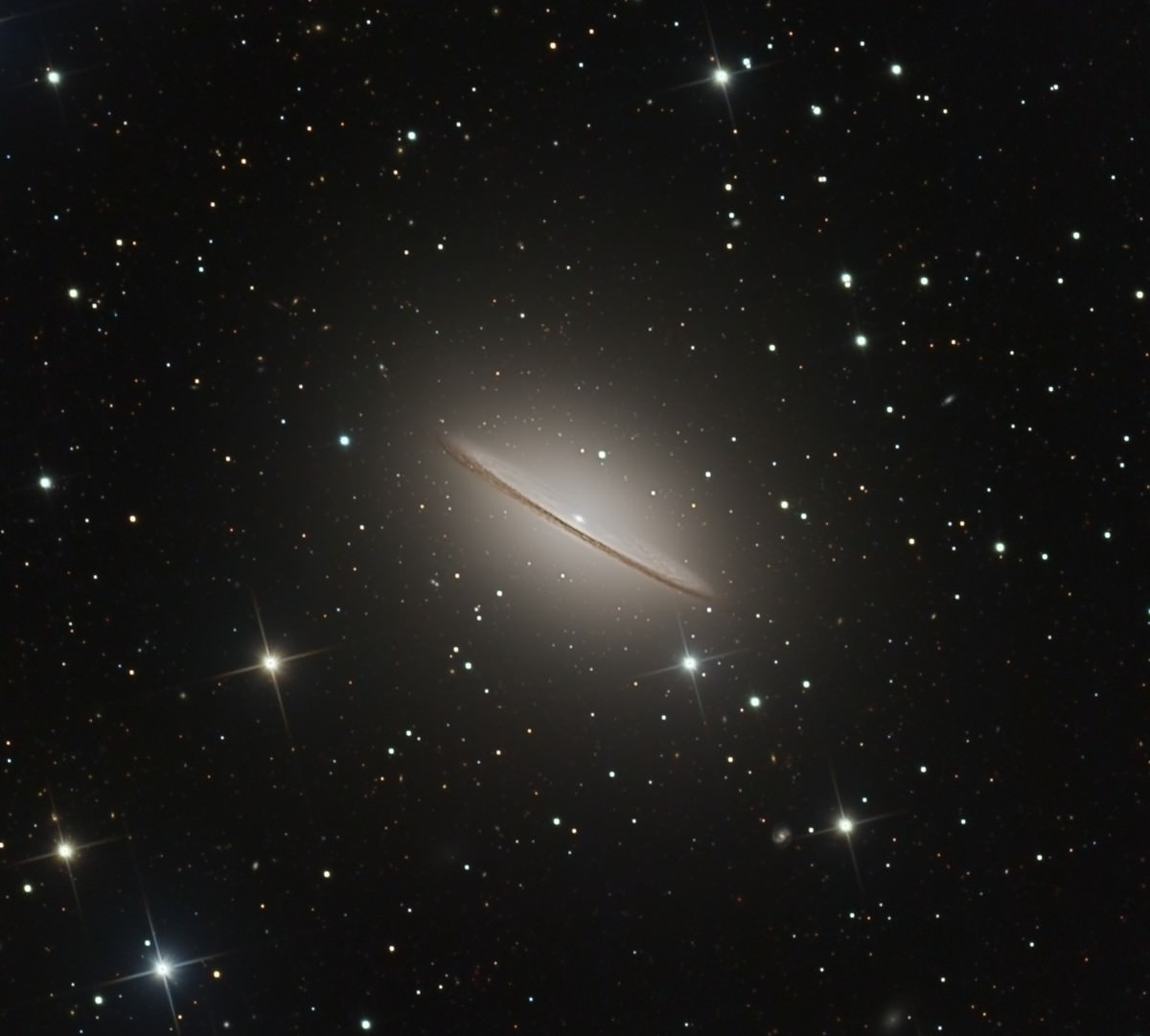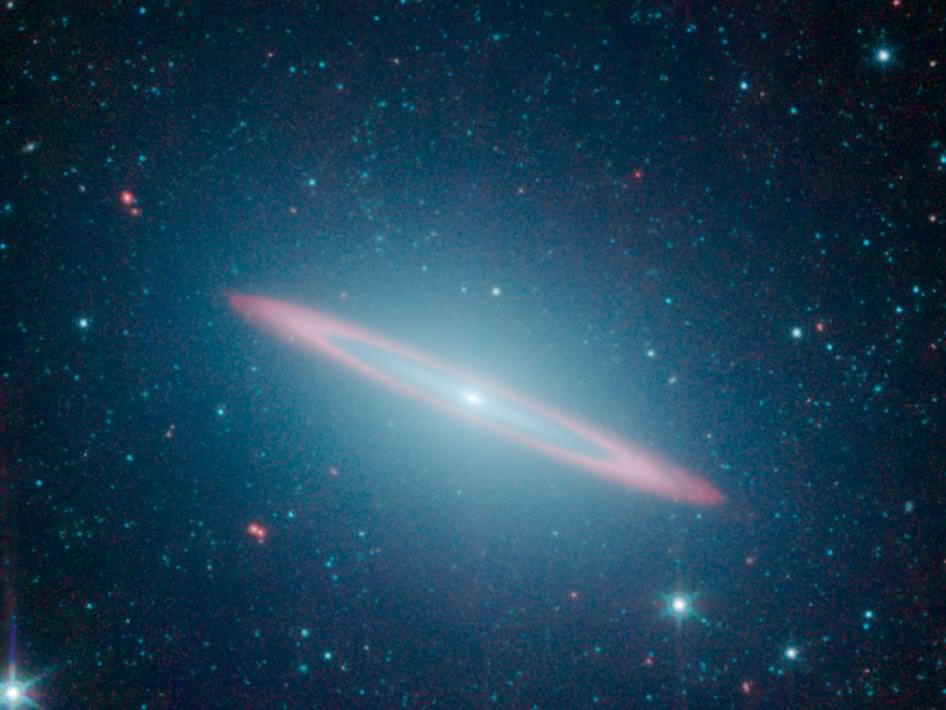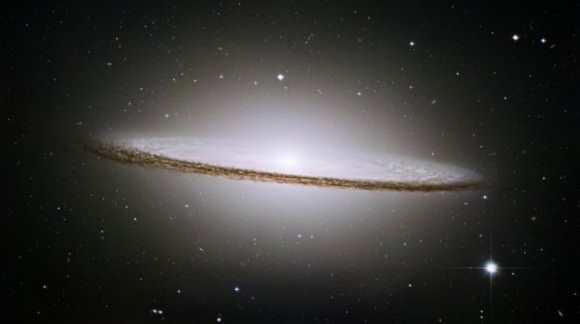Here’s a wonderful view of the Sombrero Galaxy (M104, NGC 4594) in Virgo. This multi-hour, deep exposure was taken remotely by astrophotographer Ian Sharp from the Siding Spring Observatory in Australia over the past few weeks, with 12 hours of Luminance and 5 hours each on R, G and B channels.
The Sombrero Galaxy is a spiral galaxy that we see edge-on from Earth. Its outer dust lanes and bright central bulge aare visible in this wonderful image. There’s a zoomed out version, below, and you can see more of Ian Sharp’s great imagery at his website.

Here are the details of the equipment Ian Sharp used to take these images:
Optical Tube Assembly RCOS 12.5” F/9 (2857mm focal length) Carbon-Fibre Tube w/TCC2, PIR and FFC
Equatorial Mount Bisque Paramount ME
Imaging Camera Apogee F16M-D9 (KAF-16803) with 7 slot filter wheel
Imaging Camera Filters Astrodon Series II L,R,G,B, Ha (5nm), OIII (3nm) and SII (3nm)
Guide Camera MMOAG with SBIG ST-402ME
The system delivers a 44×44 arcmin FoV operating at .65 arcsec/pixel
Processed entirely in PixInsight.
Want to get your astrophoto featured on Universe Today? Join our Flickr group or send us your images by email (this means you’re giving us permission to post them). Please explain what’s in the picture, when you took it, the equipment you used, etc.



